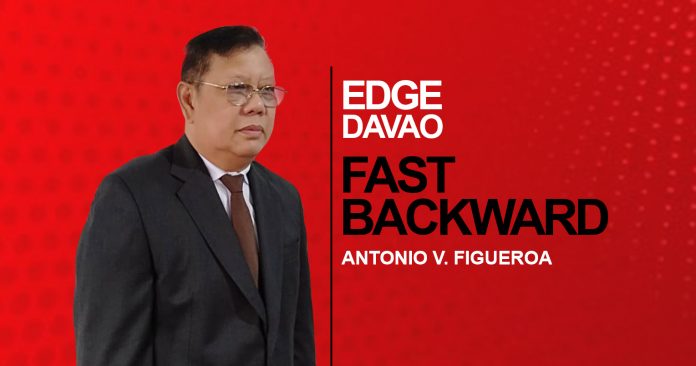Over a decade since the arrival of the Americans in Davao, development in terms of public works and infrastructure started to make major headways. By 1915, two key projects, namely the district-municipal building and the Bankerohan bridge, were completed.
The district-municipal building, home to both the town and provincial administrations of Davao, was a two-story reinforced concrete with a galvanized-iron roof that cost the national government P50,000. That same year, a P110,000 appropriation was added to the budgetary list for the erection of a separate building that would house the capital of Davao Province.
The construction of the municipal building (already known at the time as Davao City Hall) was first proposed seven or eight years earlier. By 1912, materials for the erection of a timber structure were gathered but it would take another three years before the project, “the first structure of any moment” the government had given to the town of Davao, was commenced.
Meanwhile, the building of the capitol took place only at the present site of the Sangguniang Panlungsod, erstwhile the property of San Pedro Church, after the land hosting it was donated through the efforts of Eulalio Causing who assumed as the first Filipino governor of Davao in 1915. Prior to this, provincial officials occupied the upper floor of the municipal hall.
The 1915 Bureau of Public Works Quarterly Bulletin reported that the construction of the municipal hall “has enthused [the municipal officials] to make other civic improvements that have added to the appearance of the town very materially.”
Another very significant structure was Bankerohan Bridge which was, then and now, a vital artery linking the town center to the south. The original span was a collapsible bridge 120 meters in length that crossed the Davao River. At the time, the river was about 200 meters at its widest and was impassable at times when the water level was high due to heavy rains in the highlands.
Prior to its completion, farm products from the south were unloaded on the south bank and transported in small boats across the river, the cost of which was expensive. Similarly, merchandise bought from the town and bound south experienced a similar difficulty. Later replaced in 1930 by a fixed, steel-framed span, the bridge allowed traffic for wheeled vehicles traveling to as far as Toril, which is roughly 20 kilometers from the commercial district.
During this period, the mouth of Davao River, at its widest, extended from what is now Mabini Extension along Quezon Boulevard to the football grounds of Agro-Industrial Foundation College of the Philippines (AIFCP). Between these two points was a sprawling silted islet. Over time, the waterway dividing the delta and Mabini Extension was reclaimed by informal settlers. Consequently, the smaller watercourse separating the delta and Kabacan area slowly de-silted over time, resulting in its reshaping into what is now the configuration of Bankerohan River.
On September 14, 1930, the steel-framed Bankerohan Bridge named after incumbent Davao governor Sebastian Generoso was inaugurated. The new span was made possible with the help of the interior secretary, Elpidio R. Quirino, a good friend of the governor.
When war broke out in 1941, the bridge was bombed by retreating American troops stationed in Davao City in order to deprive the Japanese Imperial Army of the advantage of catching up. For the enemy to cross the swift river, they had to employ pontoons, which made them vulnerable to ambush from the south end of the ruined span.
A year earlier, the construction of the Mati Trail, described as “a vertical or overhanging rock precipice about 2 kilometers long” was completed, thereby allowing cattle and other products from the Pacific coast section of the province to enter the port of Mati. It took a constant force of about 40 drillers from Cebu over eight months for it to be finished and become passable.




